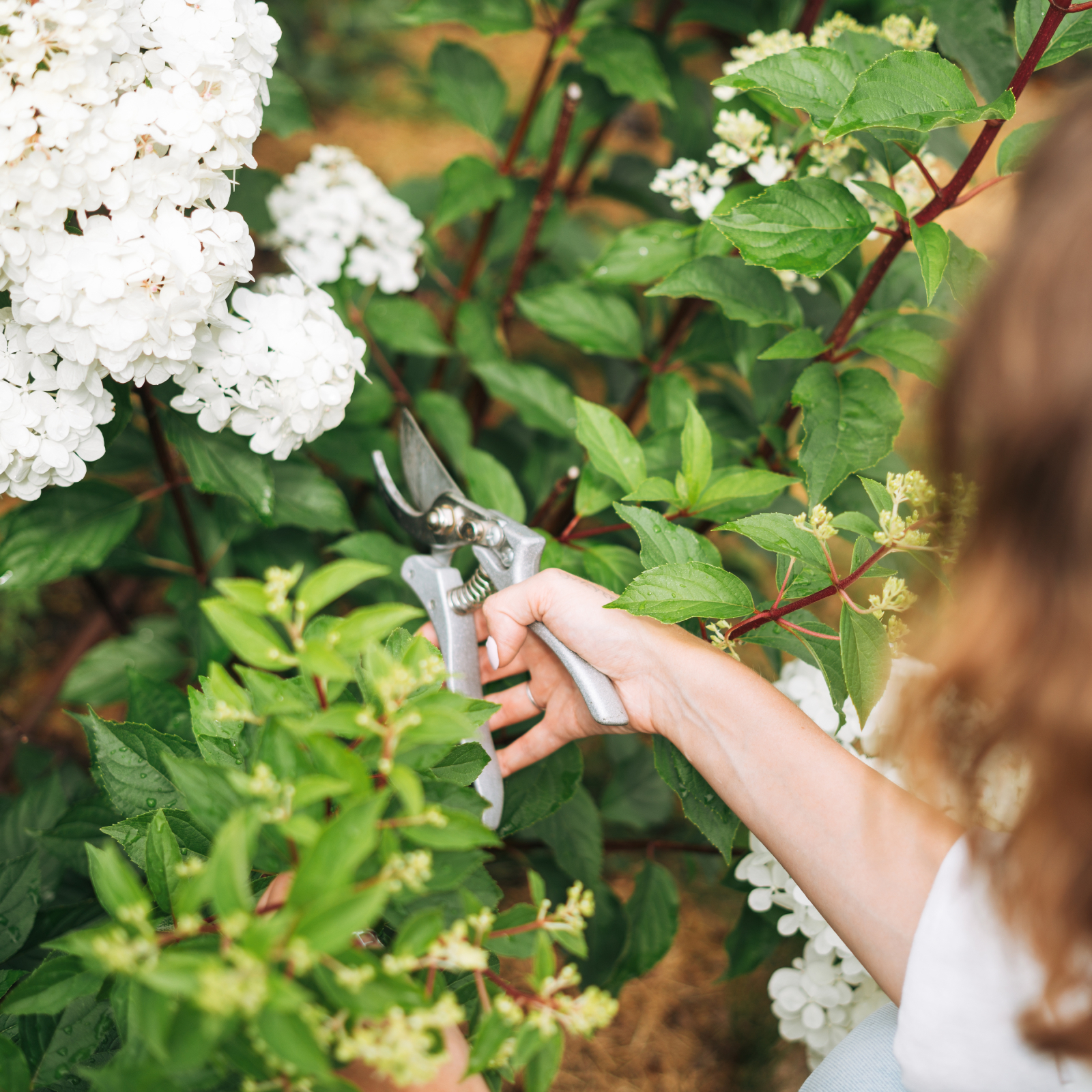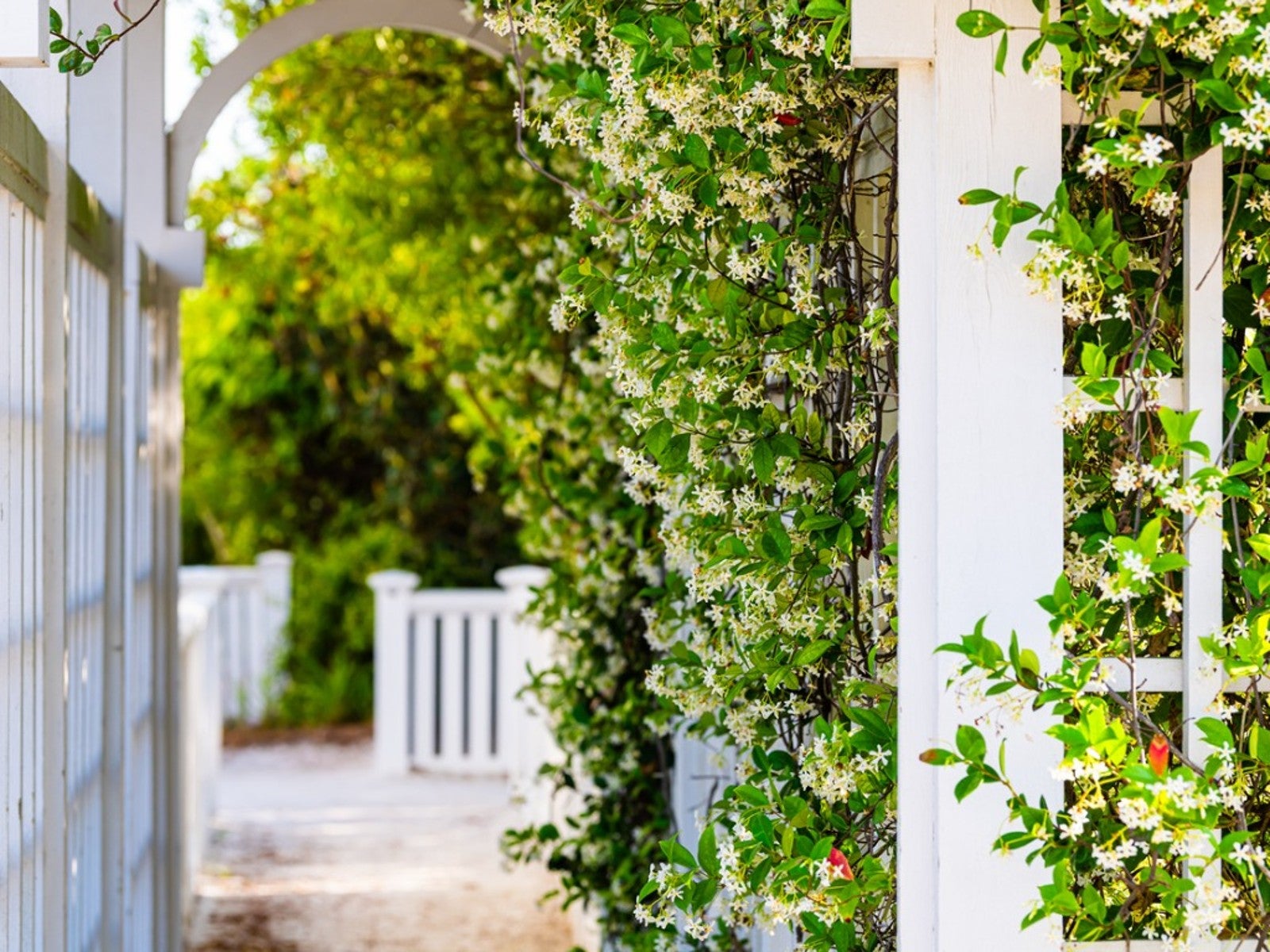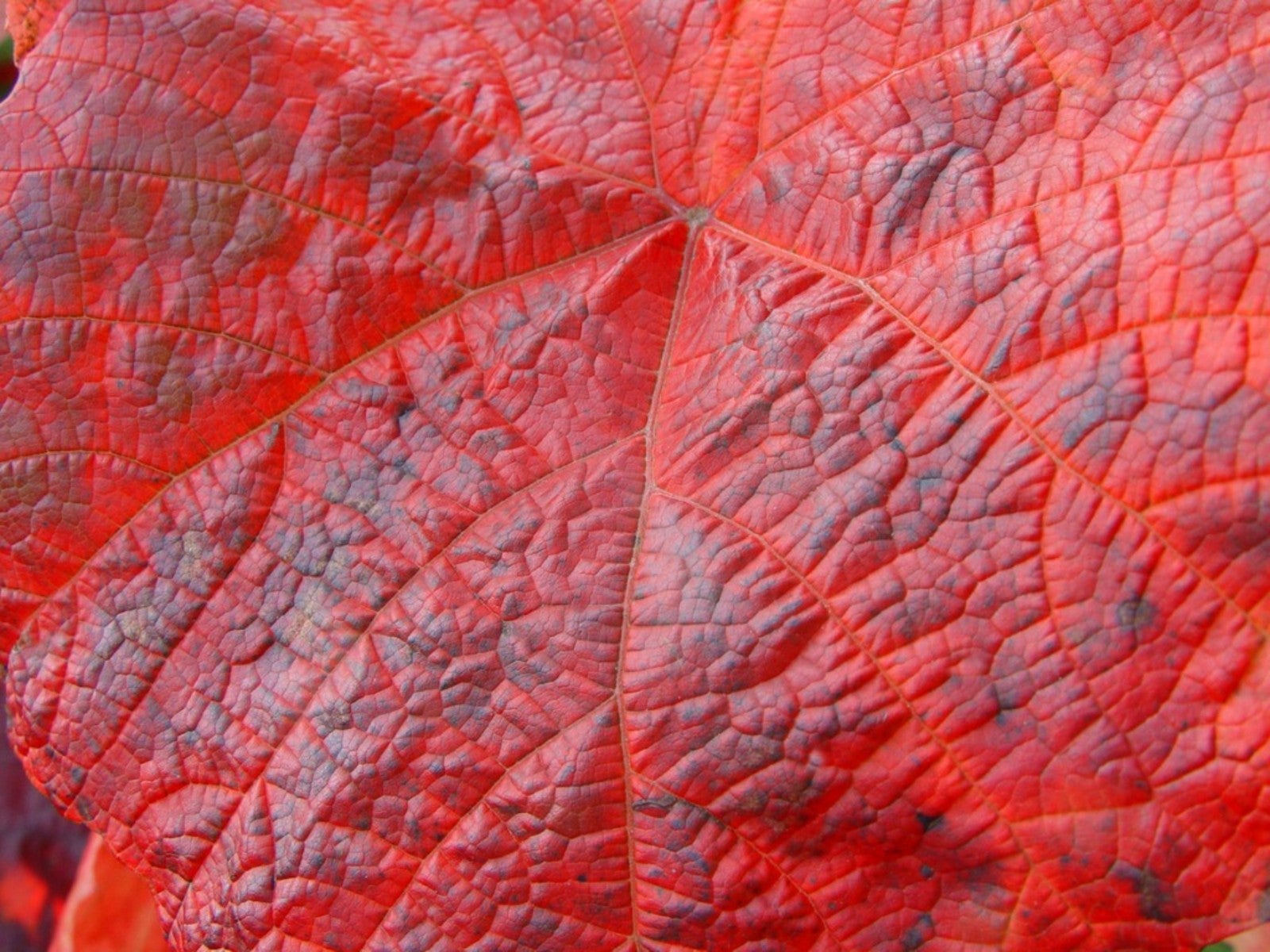Common Wind Resistant Vines: Learn About Windy Garden Vines

If you’ve always dreamt of a vine-covered arbor redolent with blooms but live in an area with significant winds and didn’t think there were any suitable vines for windy locations, this is the article for you. There are, indeed, wind resistant vines that can withstand these conditions. In fact, vining plants may be the perfect solution for windy gardens. Read on to find out about windy garden vines.
About Vines for Windy Locations
It is true that sustained winds or gusts can wreak havoc with many plants. As the plants are tugged at by the wind, the roots are pulled from the soil, making them weaker and weaker. They may lose their ability to absorb water, which leads to smaller plants, unusual development, and even death. Winds may also break stems, branches, or even trunks, which disrupt the plants ability to uptake water and nourishment. Also, drying winds may take their toll on plants by reducing air temps and increasing water evaporation. Some plants are more susceptible to winds than others. They may be more pliable with stems that bend without breaking, have narrower leaves that don’t catch the wind, and/or waxy leaves that conserve moisture. Among these are wind resistant vines - those that are able to withstand sustained or gusty wind conditions.
Types of Windy Garden Vines
If you live in the warmer regions of USDA zones 9-10, the perfect beautiful vining plant for a windy garden is the bougainvillea. Bougainvilleas are woody vines that are native to the tropical regions of South American from Brazil west into Peru and southern Argentina. It is a perennial evergreen that not only tolerates winds but does fairly well in drought conditions. It has lovely, heart-shaped leaves and brilliantly colored blooms of pink, orange, purple, burgundy, white, or green. Another beauty for the garden is Clematis ‘Jackmanii.’ Introduced in 1862, this clematis vine blooms with a profusion of velvety purple flowers contrasting with greenish-cream anthers. This deciduous vine is a Type 3 clematis, which means it enjoys being pruned down nearly to the ground each year. It will bloom profusely off new shoots the next year. It is hardy to zones 4-11. ‘Flava’ trumpet vine is yet another deciduous vining plant for windy gardens. It can grow voraciously up to 40 feet (12 m.) in length. Because of its rampant growth, many gardeners prune it often to restrain its size, but because it grows rapidly and prodigiously, it’s a great choice for a quick solution where coverage is needed. Suited to USDA zones 4-10, this trumpet vine has dark green, glossy leaves and vibrant, trumpet-shaped blooms. If you are really looking for a wind resistant vine that smells as good as it looks, try growing jasmine. Hardy to USDA zones 7-10, this vine is an evergreen that can grow a foot or two (30.5-61 cm.) each year. After a few years, it can attain a height of up to 15 feet (5 m.). It blooms with sprays of small white blossoms. Lastly, potato vine is an evergreen vine that can attain heights of up to 20 feet (6 m.). It blooms with blue and white blossoms accented by yellow anthers. Like jasmine, potato vine is a good choice for an aromatic vine. Hardy to zones 8-10, potato vines like sun and need little in the way of maintenance.
Gardening tips, videos, info and more delivered right to your inbox!
Sign up for the Gardening Know How newsletter today and receive a free copy of our e-book "How to Grow Delicious Tomatoes".

Amy Grant has been gardening for 30 years and writing for 15. A professional chef and caterer, Amy's area of expertise is culinary gardening.
-
 Pruning Limelight Hydrangea Bushes For Bigger Blooms & Stronger Plants
Pruning Limelight Hydrangea Bushes For Bigger Blooms & Stronger PlantsPruning 'Limelight' hydrangea will benefit the shrub. Flowers will be more bountiful the next year and branches will be stronger. Learn how and when to prune.
-
 What’s Wrong With Your Azaleas? Identify, Tackle And Prevent 6 Common Azalea Pests
What’s Wrong With Your Azaleas? Identify, Tackle And Prevent 6 Common Azalea PestsIf you’ve spotted signs of azalea leaf damage, don’t panic – here’s how to identify the most common azalea pests so you can take action swiftly and keep plants healthy
-
 7 Invasive Vines To Avoid In Your Yard And Garden
7 Invasive Vines To Avoid In Your Yard And GardenWhat are some common invasive vines to avoid in your yard and garden spaces? Click here to find out.
-
 Fragrant Climbing Vines For Arbors And Trellises
Fragrant Climbing Vines For Arbors And TrellisesAdding fragrant climbing vines to the landscape adds a sense of height and olfactory pleasure! Climbing vines make your space more lush, interesting, and vibrant.
-
 10 Flowering Vines With An Extended Bloom Season
10 Flowering Vines With An Extended Bloom SeasonWhether you’re short on space, need to add privacy or hide unsightly views, take advantage of your vertical space with flowering vines.
-
 Queen’s Wreath Info – Learn About Growing Queen’s Wreath Plants
Queen’s Wreath Info – Learn About Growing Queen’s Wreath PlantsFor a touch of the tropics in your landscape, try growing queen’s wreath vine. The following gives information on how to grow and care for the vine.
-
 Crimson Glory Grapevines – Growing A Crimson Glory Vine Plant
Crimson Glory Grapevines – Growing A Crimson Glory Vine PlantAlso known as Crimson Glory grapevines, the Crimson Glory vine plant is actually an ornamental type of grape. Read on for more info.
-
 What Are Deciduous Vines: Growing Deciduous Vine Varieties In Gardens
What Are Deciduous Vines: Growing Deciduous Vine Varieties In GardensDeciduous vine care may be a bit more difficult than hardy evergreens but will be worth it when they come back in spring. Click here for more info.
-
 Vines For Full Sun Locations: Growing Vines That Like Sun
Vines For Full Sun Locations: Growing Vines That Like SunTrailing vines that like full sun can grow up a fence, trellis, or an arbor with various purposes in the landscape. Find some full sun vines here.
-
 Different Trellis Types: Tips For Using Trellising In Gardens
Different Trellis Types: Tips For Using Trellising In GardensMaybe you confuse a trellis with a pergola, which is easy to do. If you’ve wondered exactly what a trellis is, click here to get more info.